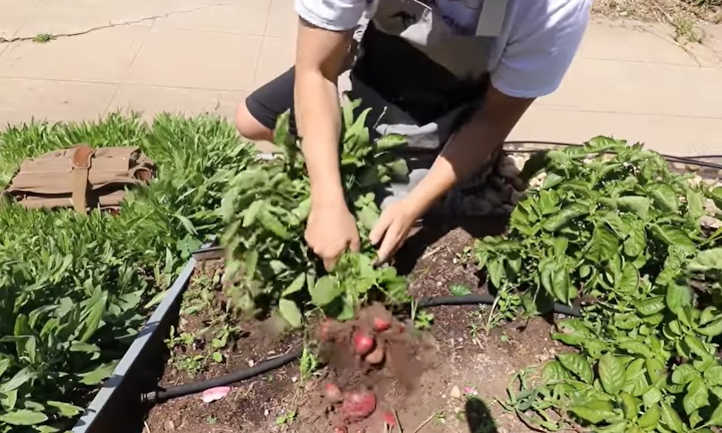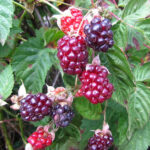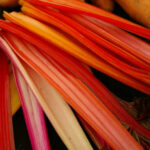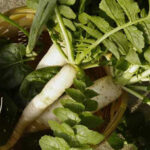As an Idahoan, I absolutely love potatoes! There are so many things you can make with them and you can grow them in small spaces. Plus, you don’t have to live in the Spud State to join in on the fun. Potato growing can be accomplished – and enjoyed – practically anywhere.
Potatoes are a top staple in the human diet, along with wheat and rice. In fact, it’s the most common non-cereal crop grown worldwide. These tubers hold such significance that they’ve been nicknamed the Apple of the Earth. They even play a role in pop culture (just ask Mr. Potato Head).
As well as being popular, potatoes also hold a place in history. They’ve had the honor of being the first crop grown in outer space! In 1995, the white potato was planted in the Space Shuttle Columbia’s microgravity astroculture lab. This experiment opened the potential for astronauts to grow food and clean the air while traveling through space.
Sadly, our spud’s history hasn’t been all fun and games. In the 19th century, it was nearly the sole food source in Ireland. A blight epidemic wiped out almost all the crops, causing a devastating famine. This has become a good example of why biodiversity is key in agriculture.
If you decide to grow these terrific tubers, you’ll find yourself with a delicious harvest and definite bragging rights. After all, not many people can say they grow their own french fries!
Quick Care Guide
| Common Name(s) | Potato, Irish potato |
| Scientific Name | Solanum tuberosum |
| Days to Harvest | 10-20 weeks |
| Light | Full sun |
| Water | Medium, consistent |
| Soil | Well-draining, fertile |
| Fertilizer | 2x a year; balanced or low-nitrogen |
| Pests | Colorado potato beetle, Leafhoppers |
| Diseases | Common scab, late blight, Fusarium dry rot |
All About Potatoes
Solanum tuberosum is native to South America. It was introduced to Europe but wasn’t too popular at first because the flowers resembled the potato’s poisonous relative Atropa belladonna. The true wonder of these tubers finally came to light though and they became an inexpensive, and filling, food. Now, gardeners everywhere are learning how to plant potatoes themselves.
Potatoes are grown in zones 2-11 as annuals. The plants are 1-1.5 feet tall and wide with leafy, grass-green growth. Under the soil, they grow round or oblong tubers in shades of white, red yellow, purple, and blue. Depending on the variety, they can reach up to 4 inches in diameter (or larger!). These spuds grow so abundantly that you can usually get 25 pounds of potatoes from just 1 pound of seed.
It’s important to note that potatoes can be poisonous if you aren’t careful. If the tubers are exposed to sunlight, they’ll turn green. With the color comes solanine, a chemical that’s mildly toxic to humans. Luckily, this can easily be prevented by keeping the spuds covered with soil or at least by cutting off the green parts after harvesting.
Potato Varieties

There are over 100 varieties of potatoes, so you have plenty of choices. The first thing to consider is when you want to harvest and your cooking method. Early varieties are usually picked before they’re fully mature. Because of this, they’re generally small and have a very thin skin. You may hear them called salad or new potatoes.
First early potatoes are planted in early to late spring and are ready to harvest in 10-12 weeks. The second early varieties take a little longer, being planted in late spring and harvested in 13-16 weeks. Both varieties are excellent choices for container gardens or a raised bed.
The other potato varieties are called maincrops. They’re planted in mid to late spring and take 20 weeks to mature. Unlike the early types, maincrops aren’t harvested until they’re fully grown. The result is a large crop of big tubers with thick skins.
Fingerling potatoes are often confused with salad ones because of their small size. However, these tubers are bred to be small and thin-skinned when fully mature. Salad potatoes get their size from being harvested early.
Along with harvest times and uses, you have a lot of colors to choose from! Red potatoes, like the Red Norland, are thin-skinned with a somewhat sweet taste and creamy texture. White potatoes have similar characteristics, but are a bit denser and have a fuller flavor. Yellow or golden potatoes, like the Yukon Gold, are moist and buttery with a waxy skin. You’ll find that the red, white, and yellow varieties are all amazing when roasted.
If you want something really eye-catching, try out a blue or purple variety (Magic Molly is a great one). These tubers have a rich color both inside and out. They’re very firm and moist, which is great for baking and boiling. Finally, we have our classic russet potatoes, like the Caribou Russet. With their thick brown skin and dense, floury substance, these are the most popular for baking.
Planting
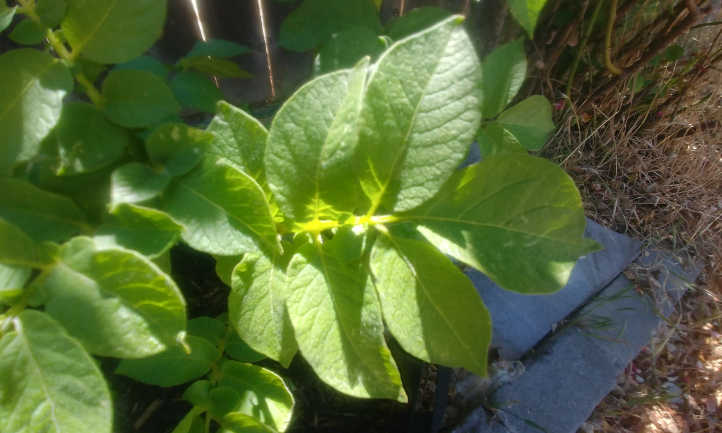
You can start buying seed potatoes in mid to late winter, either online or in gardening stores. Find out when to plant potatoes by looking up the expected date of the last frost in your area. You should sow the seeds 2-3 weeks before that date. The plants usually emerge just around the last frost. These are cold-hardy plants though, so you don’t have to worry too much about the timing as they can survive some frost.
Get a headstart by chitting your potatoes, which means having them sprout a few months before planting. Put each potato in an egg carton, muffin tin, or other divided container. The eyes should be facing upward, as that’s where the sprouts form. Place your container in a sunny yet cool place (around 50°F). In a little over a month, your seeds should have white shoots growing from each eye. When they’re about an inch long, they’re ready to plant in your garden or raised bed.
If you’re going to plant in the ground, use the ridge and furrow method to really optimize your water usage. Make your rows into raised ridges or soil that are about 6 inches tall. In between each row should be a little valley, or furrow, which is a few inches deep. Plant your seeds 2 to 3 inches deep. The sprouts should be facing upwards.
Spacing is key for potatoes. Remember, they need to have room to form those delicious tubers! We’ve got an entire separate article on spacing potatoes for maximum harvests.
Planting potatoes on top of the ridges and irrigating in the furrows keeps the plants from getting waterlogged. If you live in a very dry area though, it’s better if you plant potatoes in the furrows to conserve soil moisture.
Growing potatoes in Root Pouch grow bags, Air Pots, or other containers is an excellent solution for small spaces. You can grow them in pretty much any container you can find; as long as it’s larger than a potato plant and has drainage holes, it should work. Fill a quarter to third of your container with well-draining soil and plant the seeds at least 6 inches apart.
As your potato plants grow, add soil or mulch around them so only the top of the stem is exposed. This allows the plant to grow more roots underground, resulting in a big harvest. Make sure that all the tubers are completely covered. If exposed to sunlight, they’ll turn green and develop solanine, which is a mildly toxic chemical.
We’ve also got a really handy video on growing potatoes in grow bags that thoroughly explains the hilling process. Check it out!
Care
So how are potatoes grown? The answer is simple: give them lots of sun, soil nutrients, and love – plus a few other things. Here’s what you should know.
Sun and Temperature
Choose a location that allows your potatoes to grow in full sun. Although the tubers are frost-hardy, the green growth isn’t. It needs temperatures within 40-80°F to thrive, though 60-70°F is ideal. In high heat, your plants may need some protection from the sun.
Watering and Humidity
While you’re growing potatoes, water them regularly so the soil doesn’t dry out. Since bacteria grow best in heat and humidity, only water at the base of the plant. Try to water in the morning to allow any dampened foliage to dry out during the course of the day. Use a soaker hose to provide slow and consistent moisture if you’d like.
When the foliage starts to die back at the end of the growing season, stop watering your potatoes. They need this time to dry out and set skin. If given too much moisture, they’ll do the opposite and start to rot.
Soil
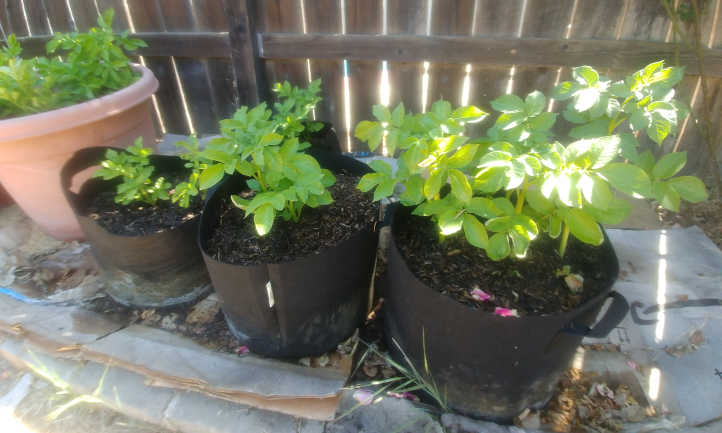
You can plant potatoes in pretty much any soil texture except heavy clay. However, it must be well-draining and have plenty of organic matter. Till the soil before planting so it will be loose enough for the tubers to grow without much resistance.
Add compost into the soil in the fall or a couple of months before planting. Because acidic soil helps prevent scab, ensure that the pH is between 4.2 and 7.0. For best results, use agricultural sulfur to lower the soil’s pH.
Remember that if planting in grow bags, you’ll want to plant in fairly shallow soil and gradually hill your potato plants as they send up greenery. This hilling process allows for potatoes to grow all the way along the stem.
Fertilizing
To keep your potatoes growing well, pay attention to the nitrogen you’re supplying. This soil macronutrient is responsible for green growth in plants. Utilize this by applying a balanced or high-nitrogen fertilizer in the soil just after planting.
After the leaves are developed, the tubers are going to take off. Boost their growth by applying a side dressing of fertilizer with higher potassium and phosphorous. The switch to lower nitrogen is essential since it will help the plant focus on tuber growth instead of its foliage.
Use a granular, slow-release fertilizer for growing potatoes since it’ll cut down on the maintenance. Chemical fertilizers may burn the growth if it comes in direct contact, so apply about 2 – 4 inches away from the base of the stem. Organic fertilizers can be applied right up next to the stem.
Pruning
You’re off the hook here! The only time you have to prune potatoes is if part of the plant is pest or disease-ridden. If you do this, be sure to use clean, sharp clippers.
Propagation
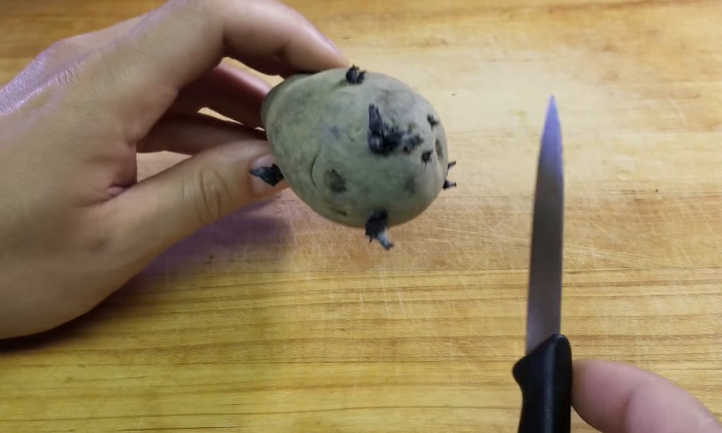
Potatoes are propagated vegetatively through seed potatoes, which are just tubers that are replanted the next spring. Even after being harvested, seed potatoes remain viable thanks to the nutrients stored in their flesh. You’ll often hear seed potatoes referred to as “volunteers”, while crop tubers are called “progeny”.
If your seed potato has any diseases, it will spread them to the soil and other growing potatoes. To prevent this, seed potatoes are usually produced in sterile environments so they’re as healthy as possible. Buying from suppliers that sell seed potatoes is the best option for keeping your garden disease-free.
If you’re just looking to experiment, you can grow new potatoes from old seed potatoes or store-bought ones. Choose tubers that are fully mature and have developed eyes, which are small divots on the surface. The seeds also need to be blemish-free and firm. They can have sprouts, but avoid seeds that already have white roots.
You’ll start by chitting potatoes by placing them in a sunny, cool location about 6 weeks before you anticipate planting. This gives the tubers the chance to sprout. You’ll notice sprouts growing from each eye, which eventually produces white roots. The goal is to chit them but plant in the soil before the white roots show up, as they break off easily when planted.
Many gardeners chop up their seed potatoes so they can get multiple plants from one tuber. Cut each seed into 1-2” pieces, ensuring that each has at least two to three eyes.
Here’s a great video on how to prepare your seed potatoes if you’re starting from a larger spud!
Harvesting and Storing
After all the hard work you’ve put in, you deserve some french fries! Before you grab the ketchup, let’s go over how and when to harvest potatoes.
Harvesting
For early varieties, you can start harvesting once the flowers bloom. The tubers should be the size of an egg or bigger. Late varieties shouldn’t be harvested until the foliage yellows and starts to die back. After this, leave the tubers in the soil for an additional 10 days so the skins can dry.
Use a shovel or hand trowel to dig up the tubers, being careful not to nick them (this will invite disease). If you grew them in containers or bags, you can just pull out the plant, dump the soil onto a tarp, and pick out the tubers. Check for and discard diseased potatoes, taking note of any issues that need to be addressed before the next season. Don’t wash the tubers just yet, as they need to be completely dry when stored.
For more information on harvesting, check out our piece on how to harvest potatoes properly!
Storing
Most potato diseases will spread even after harvesting, so infected tubers aren’t suitable for long-term storage. Choose the healthiest potatoes and put them in an aerated container, such as a basket, cardboard box, or mesh bag. Avoid plastic since it will dramatically reduce the shelf life.
Store your potatoes somewhere cold, humid, and dark. The temperature should be around 45-50°F. Avoid the refrigerator since it’s way too cold and will affect the texture. Check on the tubers regularly and remove any that go soft or grow spots. They should be good to eat for the fall and winter, after which they’ll start to sprout in the spring.
Long-term storage options for potatoes include freezing, dehydrating, or freeze-drying. There are also methods for pressure-canning potatoes.
Troubleshooting

Although there are resistant varieties, pests and diseases can be very dangerous to potato plants. Rotating your crops with plants of a different genus is one of the most effective things you can do to prevent these problems. Here are some other good solutions you should know.
Growing Problems
It’s a big disappointment to have lots of leafy growth but a low tuber yield. This is usually caused by a lack of soil nutrients when the tubers are growing. Make sure the soil is fertile before planting and apply fertilizer after the leaves are developed. Choose a fertilizer that’s higher in phosphorous and potassium so energy can be directed to tuber growth.
Inconsistent watering can cause the leaf tips to yellow and the tubers to crack. It can also stunt growth and even kill the plants. Maintain good soil moisture by adding plenty of organic matter and mulch to the soil.
Hot temperatures can also take their toll on potatoes, especially if they’re following a cold snap. The plants may lighten in color, dry up, and die. The tubers become watery and dark. Protect your plants from the sun in high heat to prevent this from happening.
Pests
The Colorado potato beetle, or potato bug, is probably what most potato farmers consider their arch-enemy. They’re hard to miss, thanks to their vibrant orange-red coloring and ladybug-like shape. You can usually eliminate them with a good dose of BT spray. They can be prevented by using diatomaceous earth, neem oil, or floating row covers. Ladybugs, lacewings, and beneficial nematodes are excellent environmental controls for this pest and many others.
Leafhoppers are tiny, lime green insects that literally hop away when disturbed. They lay their eggs inside the potatoes plant and then the offspring feeds on the surface after hatching. They’ll inject an enzyme into the plant which stunts growth and ultimately limits yield. The leaves will become discolored first, then wrinkle, cup, and turn brown on the tips.
Use floating row covers, diatomaceous earth, or insecticidal soap to prevent infestations. Beneficial insects such as ladybugs and lacewings will feed on leafhoppers along with other pests. If needed, use an organic insecticide to control existing populations.
Diseases
Common scab is something you’re sure to have come across when buying potatoes from the grocery store. It’s a bacteria that causes rough, dark lesions on the skin of the tuber. Common scab doesn’t affect the edibility of the spud, but you should cut it off when preparing. You can prevent this bacteria by using scab-free seed, practicing crop rotation, and maintaining good soil moisture. It’s also very beneficial to keep the soil acidic, preferably under 5.2.
Late blight (Phytophthora) is the dangerous disease that caused the Irish famine. It spreads so quickly that it can wipe out a whole crop of potatoes in one season. The spores usually start in the foliage and then are washed down to the tubers. They cause sunken, water-soaked lesions that are dark and tinged with purple, red, or white. In time, blight can collapse the stem and make the tubers useless.
Any infected plants should be immediately removed and destroyed before they can infect the others. Don’t store infected tubers with others, since the spores will spread even after harvest. You can lessen the chances of late blight by applying multiple, small doses of a protectant fungicide throughout the mid and late season.
Fusarium dry rot is a brown and black rot that can consume a good amount of the tuber. It enters through cuts in the skin, making seed potatoes highly susceptible and progeny one more protected. The infection will spread internally in the tubers and eventually collapse, leaving a sunken area on the surface.
You can prevent this disease from the time you begin planting potatoes. Only plant seed potatoes that are disease-free or at the very least only have minimal amounts of dry rot. Before cutting the seed, warm the tuber to at least 50°F as it causes less damage than when the seed is cold.
Frequently Asked Questions
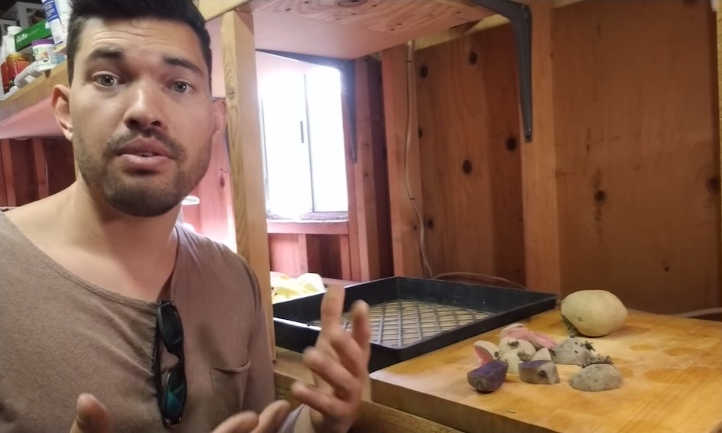
Q: Can I grow potatoes from store-bought potatoes?
A: You can, but it’s not without risks. Store-bought potatoes may carry diseases that do more harm to your garden than good.
Q: What’s the difference between seed potatoes and regular potatoes?
A: The seed potato is used for the sole purpose of growing potatoes for harvesting.
Q: How many potatoes do you get per plant?
A: You can usually get 25 pounds of harvest potatoes from 1 pound of seed.

